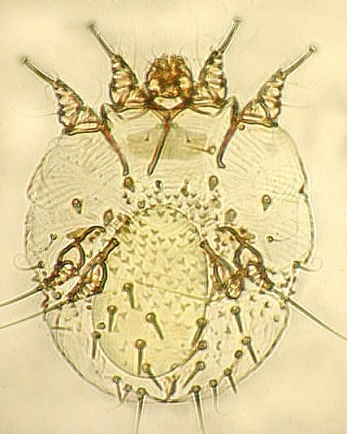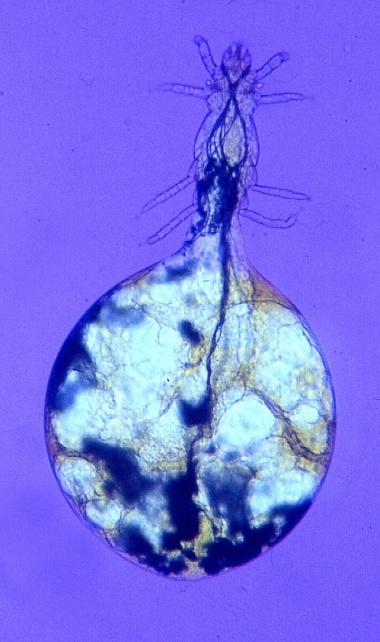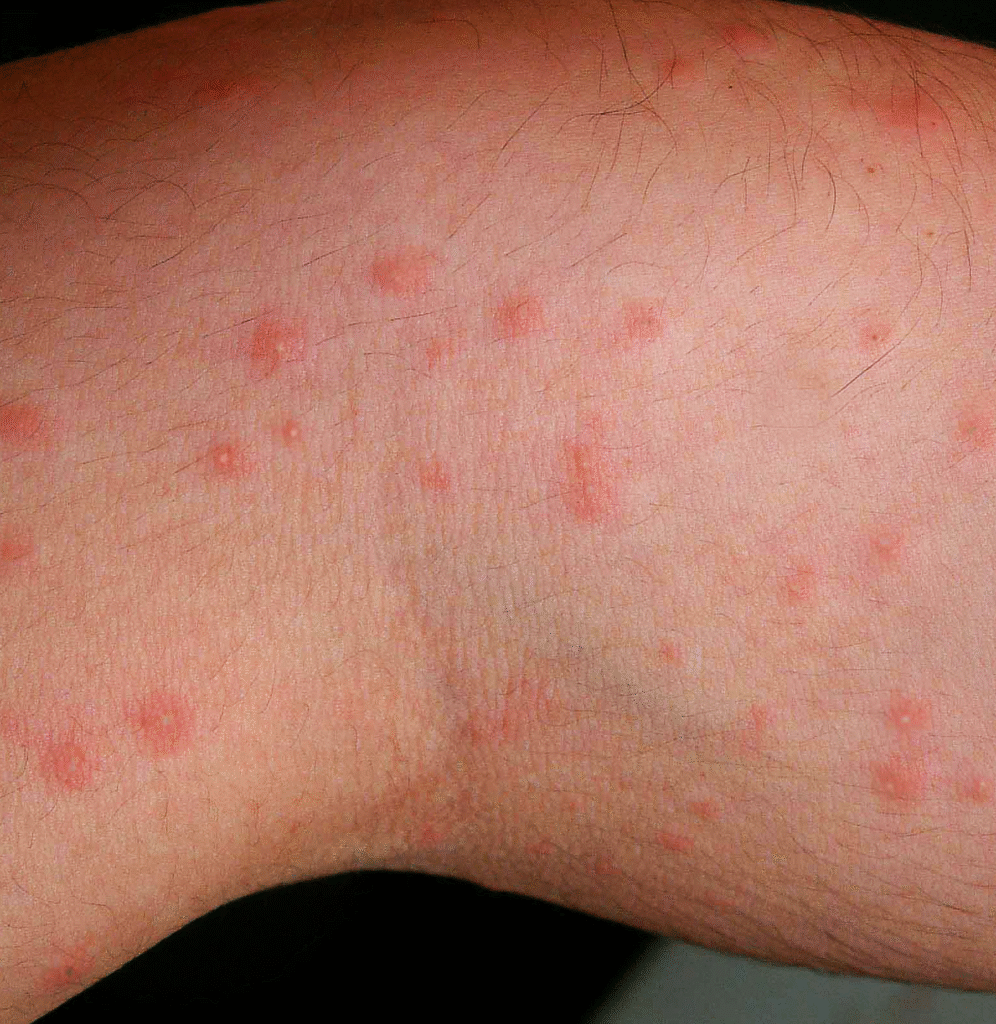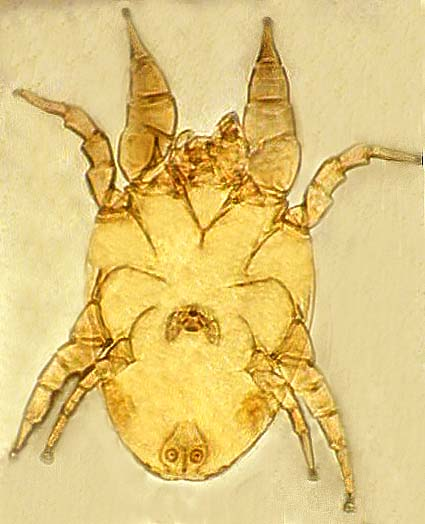Innovation starts at the Urania Research Centre, interview with Dr. Mario Antonello Principato
In the landscape of European entomology, Dr. Mario Antonello Principato stands out for his originality and vision. Academic, entomologist and acarologist, he has devoted his career to studying pathogenic arthropods that cohabit with humans in indoor environments, as evidenced by his numerous publications and conference participation. Today, his expertise supports the Urania Research Centre, a leading laboratory in environmental entomological diagnostics and the development of biocompatible solutions.
Dr. Principato, what is the core of your work?
We study arthropods that settle in houses, schools, offices and other enclosed spaces, causing dermatitis, allergies and respiratory issues. At the heart of our work is E.D.P.A.® (Indoor Dust Direct Examination), a diagnostic technique I patented. It detects biological traces of pathogenic insects and mites in dust: microscopic body fragments, egg chorions, larval exuviae or faecal material. It’s a unique method, applied successfully not only in medicine, but for pest monitoring in other sectors, such as the agri-food sector and even public transport, like Italian trains.
Can you explain what the aim of an E.D.P.A.® is and how to request it?
In the medical field, the aim is to identify the pathogenic insects or mites and their location. The patient collects dust samples by sweeping the floors and placing the dust in dry jars, labelled with the room name. Samples are sent to our Centre at Magione (PG), Italy, with an Anamnestic Form (available at www.edpa.it) including personal data, symptoms, home details and privacy information. In agri-food facilities, the same method is used by collecting dust along walls and beneath machinery to detect possible pests and their larvae before they spread.
Can this examination solve the problem?
Absolutely. The results enable targeted, less polluting and more effective interventions. Fumigation is not always needed—washing clothes, vacuuming, removing mould from a wall or treating a specific item or pet may suffice. E.D.P.A.® identifies the environmental cause and suggests the best solution. In food processing, it locates reproductive hotspots before production is affected, allowing owners – and not the pest controllers – to decide when and where to apply targeted treatments and make informed, cost-effective decisions.
Have you developed solutions for scabies as well?

Yes. We’ve developed the Scabies-Test, a specialised variant of E.D.P.A.®, which can remotely detect Sarcoptes scabiei in skin cell debris from the suspected patient’s bedroom dust and bedding. The test also enables the distinction between common or crusted scabies, false environmental scabies, and zoonotic pseudo-scabies. This differentiation is crucial for therapeutic purposes: while common and crusted scabies often require aggressive personal treatments—sometimes extended to family members or close contacts—the other two forms are typically resolved with specific environmental sanitisation and treatment of the infected animal, respectively.
Image – Sarcoptes scabiei
What are the most frequent infestations found in homes?
In autumn and winter, infestations are mainly caused by environmental mites (e.g., Glycyphagus spp.) that feed on microscopic mould, especially on damp walls. These often trigger itching, dermatitis and crawling sensations.


Image – Pyemotes ventricosus
In spring and summer, they are commonly caused by mites developing in worm-eaten furniture, such as Pyemotes ventricosus, causing multiple red, itchy lesions. Throughout the year, various pathogenic arthropods coming from outside (e.g., from birds, rats or garden plants) may invade indoor spaces and cause health troubles.
What is the best method to treat worm-eaten furniture?
Among the many available methods, I believe the most modern and effective is long-wave infrared treatment. This technology was developed by Alena Technologies Srl, thanks to the young Eng. Lorenzo Desiderio, who designed the control unit for this disinfestation system. It employs carbon fibre panels emitting infrared rays in the 7–15 μm range, which penetrate the wood and destroy all arthropod life stages, including eggs, without harming materials or leaving residues. The IRSystem is eco-friendly and ideal for parquet, beams, textiles, carpets, valuable museum pieces and even train furnishings.
Could this technology eliminate mites that cause asthma?

Certainly. When applied to mattresses or fabrics, it eliminates Dermatophagoides mites, known asthma triggers. The IRSystem is also available for purchase for both professional and home use. A domestic-use module is useful for allergy sufferers. A parasitological check should be carried out in every season or, however, each environmental treatment should always follow an E.D.P.A.® analysis, able to detect mite presence, quantify their number, evaluate reproductive status and calculate asthma risk.
Image – Dermatophagoides farinae
Can the invisible presence of mites lead to obsessive behaviour?
Unfortunately yes. The stress from persistent discomfort can trigger hallucinatory or obsessive disorders, like Ekbom Syndrome or Morgellons disease. But not all patients are delusional. Many suffer from misdiagnosed bites by real environmental micro-arthropods. E.D.P.A.® has clarified many such cases, allowing for conclusive interventions and restoring peace of mind. In other cases, in the samples collected from the patient’s skin and sent to our Centre, we often detect the presence of Demodex, mites I have studied extensively. They live in the pilosebaceous units of the skin in most people without causing any issues, but in very sensitive or immunocompromised individuals, they can lead to discomfort, such as crawling sensations or non-lesional itching—often distressing because they are not understood, either by the patient or by others. Identifying the cause brings great relief: it proves the symptoms are real and helps the person accept this strange but manageable coexistence.
Does the Urania Research Centre also carry out applied research?
Yes, we test third-party formulations, but also develop low-impact insecticides, acaricides, natural larvicides and eco-repellents for sale. One of them, ALISTAG™, a highly valued antifungal and anti-mite food grade coating for cured hams and cheeses, was marketed by us until 2020. Its trademark and know-how are now for sale.
Do you have international partnerships?
Yes, we collaborate with EcoSafe® Labs Inc., a pioneering company based in Dallas, Texas, led by Gregory Brandt, a brilliant entrepreneur and Brown University graduate. EcoSafe® Labs specialises in developing next-generation biological alternatives to traditional pesticides and cleaning products, offering natural solutions against insects, odours and surface contaminants. EcoSafe® Labs Inc. exports to some countries, including the USA and South Korea, and plans to expand into Europe.
We are enthusiastic about this forward-thinking partnership, which shares our commitment to sustainability, innovation and public health.
In summary, what should we do, if we experience itching or skin symptoms at home?
An E.D.P.A.® analysis is strongly recommended. Only a precise diagnosis can guide the appropriate solution — whether through long-wave infrared treatment, such as the innovative IRSystem by Alena Technologies Srl, targeted insecticides, veterinary care, or simple non-invasive measures. Acting with knowledge is the key to resolving the issue.
Conclusion
The Urania Research Centre is now an international reference in the environmental diagnosis of pathogenic arthropods. Thanks to Dr. Principato’s expertise and a scientific, sustainable approach, it provides effective, innovative solutions to improve the quality of life in the spaces we inhabit.



